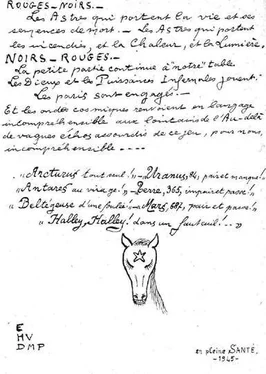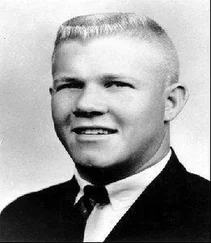Actually the prosecutor at the trial, Pierre Dupin, later expressed doubts about the defendant’s sanity. Still, neither he, the defense attorney, the judge, nor Petiot wanted to deal with this part of his past. The jury was instructed to heed the latest mental evaluations: Petiot was not psychotic; he was amoral, completely lacking in conscience, empathy, and scruple and feeling no guilt or remorse.
After the verdict, the civil attorneys representing the families of the victims immediately sought financial compensation on behalf of their clients. The magistrates agreed on the following payments from the Petiot estate: Paulette Dreyfus would receive the largest amount (880,000 francs), influenced in part by the high ransom she had paid. Next was the widow of Dr. Braunberger, who received 700,000 francs, followed by Guschinow with 500,000 and 100,000 to the relatives of the Kneller family in Tel Aviv. Relatives of the Wolff family in Tennessee, Cuba, and Haifa were to share 300,000. The remaining five families all received 100,000 francs or less:
Grippay
100,000
Arnsberg
80,000
Rossmy
50,000
Khaït
50,000
Piereschi
10,000
Total:
2,770,000
The Petiot estate was also fined another 312,611.50 francs in court costs, making a total of 3,082,611.50 francs. Very little of this amount was ever paid.

AS Petiot awaited the outcome of his appeal, which Floriot had filed immediately, a routine search through his cell turned up a tiny vial sewn into the hem of his prison uniform. Authorities suspected it contained cyanide, but it was nothing more than a sedative. Otherwise, Petiot continued, as usual, smoking, drawing, writing poetry, and wondering, “When are they going to assassinate me?”
Jules-Henri Desfourneaux, meanwhile, was told to ready the guillotine. Sixty-nine years old, with a long white beard, Desfourneaux had been appointed grand high executioner, or “Monsieur de Paris,” in 1939 when his predecessor, Anatole Deibler, had suffered a heart attack on the way to his 401st public execution. Deibler had had no successor, and so the position would have gone first to his chief valet, André Obrecht, if he had been able to accept. The position of executioner was hereditary.
This instrument, introduced in April 1792 by its namesake, the French physician Joseph-Ignace Guillotin, was supposed to be a more humane form of capital punishment compared to the hooded ax man, who, after all, might miss, fail to use sufficient force, wield a dull blade, show up drunk, or all of the above. The guillotine would remove the head painlessly, Guillotin argued, and avoid the gruesome slaughter that sometimes accompanied executions.
After hiring a harpsichord maker to construct the first machine and then practicing it initially on straw, then sheep, and finally corpses, Guillotin had improved the device by adding weight and changing the shape of the blade from a crescent to a triangle. “The National Razor,” “The People’s Knife,” “Guillotin’s Daughter,” and the “Timbers of Justice” were some of the popular nicknames for the instrument that would play such a prominent role in French history until its last exercise in 1977.
Desfourneaux’s first execution had not been a success. On June 16, 1939, the neck of convicted murderer Eugen Weidmann did not sit properly in the lunette. One of the assistants had to yank his head forward, using what leverage he could, namely by grabbing the hair and tugging on the ears. Eyewitnesses spoke of fountains of blood, staring eyes, and the eerie whistling sound, or gasp from the windpipe, that comes, as witness Tennyson Jesse said, when the “last breath of air leaves the lungs.” The audience came forward to dip handkerchiefs in the blood, as if the murderer had became a saint. Executions in the future, the government decided, would be held in private.
Now, seven years later, Desfourneaux would prepare to administer the Petiot death. He faced a number of problems. The guillotine had been severely damaged by Allied bombing raids and he needed money to repair it. When this was refused, Desfourneaux went on strike. Some critics not only wanted the government to decline his request for funds, but hoped that Desfourneaux himself would be sacked, as he had executed several French Resistance leaders on German orders. His valet, Obrecht, on the other hand, had worked for the Resistance, and would have even outranked Desfourneaux if the ancient family requirement weren’t on the books.
Desfourneaux’s supporters reminded his critics that Article 327 of the French Penal Code exonerated the executioner from any personal responsibility in administering state executions. Perhaps the whole dispute could be sidestepped, it was noted, by using a firing squad. Petiot, mocking the bumbling of the state’s attempts to execute him, joked that he would die laughing.
EARLY on the morning of Saturday, May 25, Desfourneaux and three valets arrived at the inner courtyard of the Prison de la Santé with an old horse cart loaded with equipment. They assembled the machine quickly and quietly. The fifteen-foot uprights were hammered into place; the grooves inside the uprights had been greased. The heavy triangular steel blade had been sharpened and connected with the weight to ensure the knife fell only one time.
Petiot’s appeal had been rejected by the Chambre Criminelle de la Cour de Cassation. Floriot had met with the president of France, Félix Gouin, but it was soon clear that there was not going to be a presidential pardon. And after a failed attempt on the twenty-fourth, when the guillotine was not working, the execution had been rescheduled for the following morning. At 4:10 a.m., everything was ready.
Four cars pulled up to the prison gates. The delegation consisted of Floriot, Dupin, Paul, Gollety, as well as Gollety’s clerk Charles Schweich, Floriot’s assistant Eugène Ayache, and several other police, court, and prison personnel. Président Leser, who did not come in person, sent a representative, one of the magistrates in the trial, Magistrate Meiis. Floriot’s assistant Paul Cousin also demurred, claiming to be unable to watch the event.
Just before four forty-five a.m., the delegation entered cell 7 of Block 7. Petiot looked remarkably rested, as if his handcuffs, ankle irons, and the shadow of the guillotine had not disturbed his sleep. “Petiot, have courage,” Dupin said. “The time has come.” Petiot cursed him.
Dupin asked if he had any final requests. Petiot requested time to write a farewell letter to his wife and son. The irons were removed from his hands and feet, and after changing into the gray pin-striped suit he wore at the trial, Petiot sat down at the small desk beside his bed and started writing. “How long is he going to continue writing?” Meiis asked Dr. Paul, who said that he remembered some inmates composing letters for four hours. The delegation waited. Twenty minutes later, when he finished, Petiot glanced at Gollety, who looked pale enough to faint, and jokingly offered to give him an injection.
He looked at Dupin and Gollety: “Gentlemen, I am at your disposal.”
As was customary in France, Petiot was offered a last cigarette and a glass of rum. He accepted the cigarette. The prison chaplain, Abbé Berger, offered confession and mass. Petiot declined, though he relented when he was told that it would please his wife. The delegation took Petiot down the long corridor, where fellow prisoners made noise in their cells to bid him farewell.
Leaving the Seventh Sector, they turned left onto an open area of the Fifth Sector and then descended the thirty-nine steps to the Sixth. They arrived in the clerk’s office, where Petiot signed the register, which released him from prison and into the hands of the executioner. The blinds in the office were down to prevent him from seeing the instrument for as long as possible. The handcuffs were removed and replaced by a cord. “I only see that condemnation to death distinguishes a man,” Petiot said, citing the words of Mathilde de la Mole in Stendhal’s The Red and the Black . “It is the only thing that you cannot buy.”
Читать дальше













